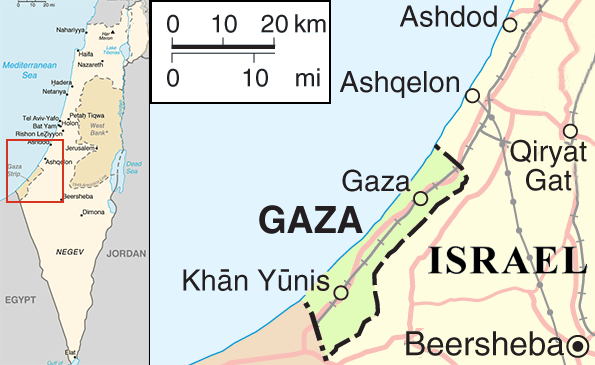Israel has launched another bloody invasion into Gaza Strip. In response to rocket attacks by the group Hamas, Israel has shelled and bombed targets in the tiny coastal region — including homes, hospitals and a United nations school — and has unleashed a ground offensive. The fatality count is about 20 Palestinians killed for every Israeli. Most of the dead Palestinians are civilians, including many children; the Israeli dead are mostly soldiers.
The Israeli military says that it has warned civilians to leave their neighbourhoods prior to launching attacks, but Gaza is tiny — 51 kilometres by 11 kilometres at its widest point — so there is really nowhere to go. Further, an Israeli naval blockade prevents anyone from leaving by sea, and prevents much-needed supplies and medicine from reaching Gaza.
Unfortunately, partisan explanations for these recurring conflicts provide us with too little history. Defenders of Hamas, point correctly to Israel’s oppression of Palestinians. But Hamas, which is both a political and military group, has a bloody record of its own. Meanwhile, Israel’s defenders argue that the country is surrounded by hostile Arab nations and movements and therefore blame everything on them.
In Canada, Prime Minister Stephen Harper and the Foreign Affairs Minister John Baird repeat by rote that Israel has a right to defend itself. This, however, ignores Israel’s history of oppressing Palestinians and its killing of adult civilians and children in Gaza.
For unqualified supporters of Israel, history seldom extends back as far as 1917. In the Balfour Declaration, the great powers — seeking support in the First World War — promised the Zionist movement that Jews could have a piece of Palestine as their own, even though there were already people living there. Nor do we often hear that in 1947, when the United Nations issued a declaration partitioning Palestine, Jews accounted for just six per cent of the population but received 56 per cent of the land area.
Not surprisingly, there was a war, which the Israelis won before taking another 22 per cent of Palestinian land. During and after that conflict, an estimated 700,000 Palestinians were driven out of what became the state of Israel in 1948. There was another war in 1967. What was known as the Six-Day War created more Palestinian refugees and allowed Israel to seize even more territory in the Sinai Peninsula, Syria’s Golan Heights and all land west of the Jordan River. That occupation continues even though the United Nations declared it to be illegal.
In addition Israel has relentlessly pushed new settlements into the occupied territories and has built a huge security fence which intrudes even farther onto the land and into the neighbourhoods of Palestinians. The settlements and wall have also been declared illegal under international law.
History does matter. The late Rev. Frank Epp, a historian of Mennonite heritage, wrote a book in 1970 entitled, Whose Land is Palestine? In it, he wrote that both Jews and Arabs have been wronged. Jews were persecuted, particularly in Europe, for centuries. It was an oppression that culminated in pogroms and the unspeakable Nazi death camps of the 1940s. Still, Europe and America decided to arrange for the partition of Palestine, which created yet another injustice, according to Epp. “This then is the central problem of the Middle East,” he wrote. “The attempt to redress a wrong committed against the Jews produced a similar wrong against the Palestinian Arabs.”
Jews in Israel desire security while Palestinians seek redress for injustices committed against them through Israel’s very creation. It’s a cycle of violence and retaliation that can only be ended through negotiations. The conflict may appear intractable but others, such as the civil war in Ireland, once appeared the very same way but were settled nevertheless.
This piece appeared in slightly different form on a United Church Observer blog on July 24, 2014.



